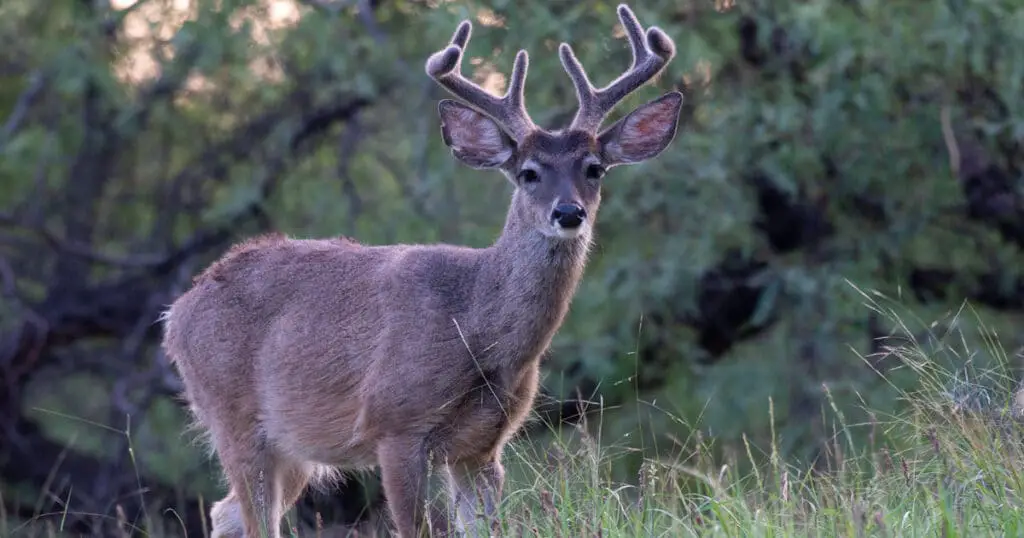Ever been to a state park in the American Southwest or Mexico? If so, maybe you’ve seen a Coues deer. They’re a subspecies of the well-known American white-tailed deer. These deer are smaller than regular white-tailed deer. In fact, their size is their most identifiable characteristic. Let’s learn more about this unique sub-species of deer below.
Here is an overview of what we’ll talk about here:
- Where did Coues Deer get their name?
- How do you pronounce Coues?
- Where do Coues Deer live?
- What are the differences between Whitetail and Coues deer?
- What is the world record Coues deer?
- How to hunt Coues deer
- Coues deer venison
Where Did Coues Deer Get Their Name?
Coues deer take their name from a former army doctor called Dr. Elliot Coues.
Dr. Coues was stationed at an army base in the Arizona territory in the late 1800s. He was the first to record a description of the species.
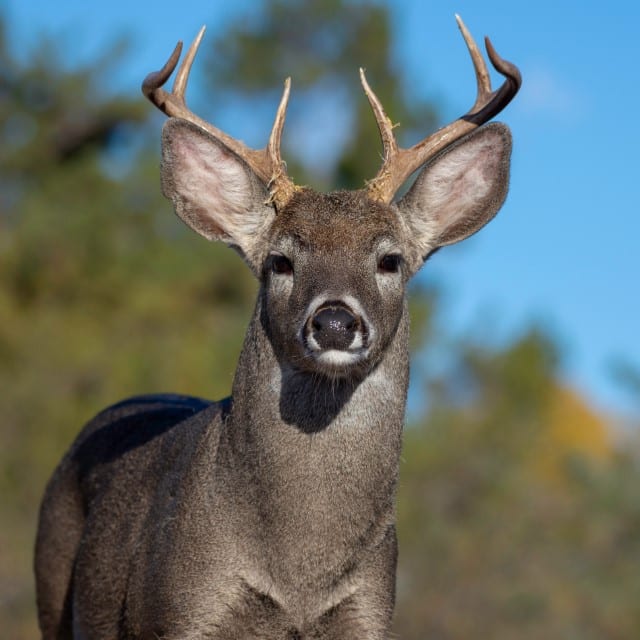
Dr. Coues categorized the subspecies of many North American animals. In fact, he founded the American Ornithological Union in 1883, an organization that still exists and is devoted to the methodological study of birds.
How Do You Pronounce Coues?
Most hunters and deer enthusiasts pronounce the name “cooz.”
Don’t sweat too much about the pronunciation. Other hunters should know what you’re talking about.
Where Do Coues Deer Live?
This deer species is found in the deserts of the North American southwest, specifically Arizona and New Mexico.
Arizona has the largest population of these deer. Mexico has an even larger population of coues.
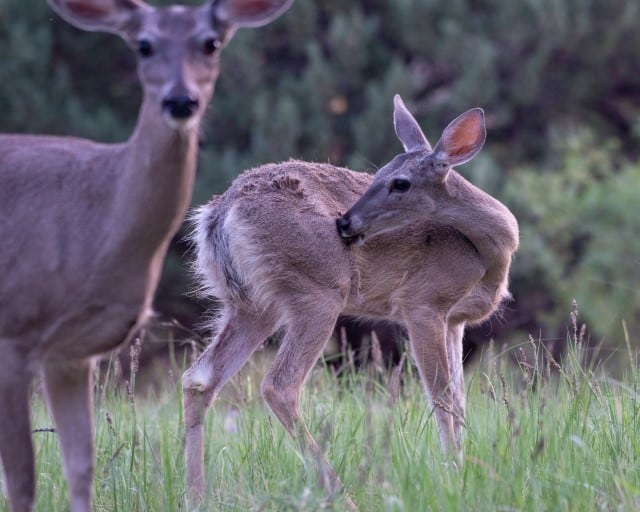
Overall the habitat these deer prefer is found in mountain ranges. They don’t mind high altitudes and often spend time at elevations higher than 6,000 feet.
Certain weather conditions may lead coues bucks and does to wander down to lower elevations.
Their bodies are well-adapted to heat and high altitudes. Their blood circulation helps cool them down.
Coues deer can also survive for long periods without water.
They are better at retaining water than other deer species, but they cannot go without water indefinitely.
In fact, during especially dry years coues deer are more likely to die from dehydration than predation.
What is the Difference Between Whitetail and Coues Deer?
Coues are a subspecies of white-tailed deer, with unique traits from their white tail relatives. They aren’t the only subspecies, either – Key Deer are another subspecies of white tailed deer.
Size Differences
They are much smaller than other white tailed deer.
Grown Coues bucks measure around 30 inches from shoulder to hoof. Most of these deer will never exceed 100 pounds.
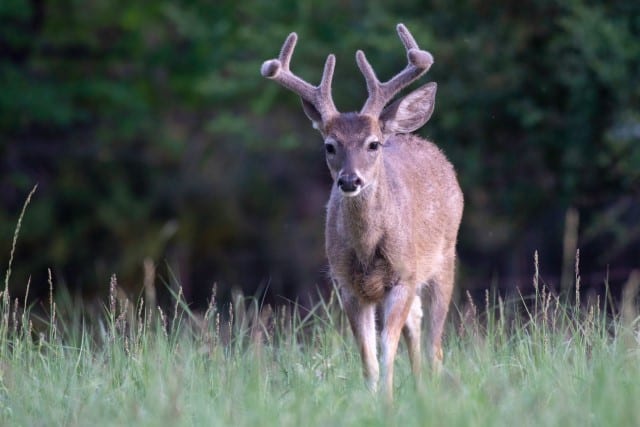
A white-tailed buck, on the other hand, will probably measure around 47 inches at the shoulder. It will weigh between 150 and 300 pounds, sometimes even more.
As Coues deer are much smaller than regular white-tailed cervids, their carcasses are much easier to handle.
However, this also makes them much more difficult to hunt. After all, smaller animals are more difficult to see.
Other Appearance Differences
As Coues deer are so small in size, their ears and tails look out of proportion.
Their ears are notably large compared to their face and body.
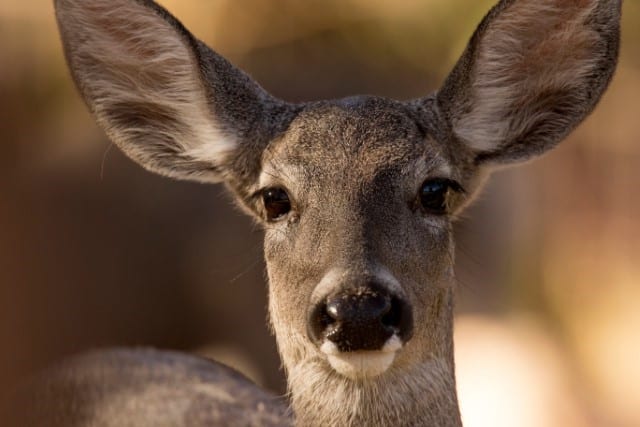
The inside of a coues’s ears are full of tiny blood vessels.
Blood circulates from the heart up to the ears, and then it cycles down to the rest of the body. This is part of the coues deer’s ability to stay cool in the desert heat.
Habitat and Coat Color Differences
Coues fur is greyer than that of an ordinary whitetail. This deer’s natural habitat is the desert.
The gray in their fur lets them blend in with the desert colors. Coues look most gray during the winter.
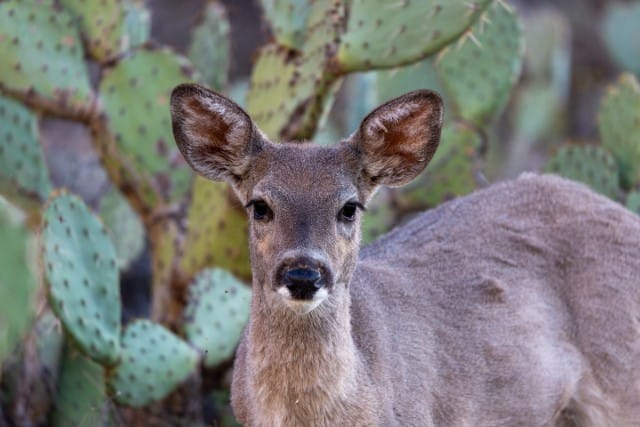
These deer shed their winter fur during the spring and summer. Their warm weather fur has more of a reddish color.
This deer’s tail will shoot up in the air when they sense a potential predator is nearby.
When their tail shoots up, it reveals a white underside. This is more noticeable even than what we see with regular white-tailed deer.
Tail coloration varies slightly. The alterations are probably due to genetic differences among populations.
What is the World Record Coues Deer?
The largest coues deer ever shot was killed in 1953 in Pima County, Arizona.
The buck was so big that most hunters were skeptical about whether it was a coues or actually an ordinary whitetail.
The shot has been confirmed with a score of 144 1/8.
Most other Coues deer records come from Arizona. Of the top 10 shots recorded, five took place in that state. Two record shots were in Sonora, Mexico.
Arizona remains the main hunting destination for these deer. This is despite the fact that Mexico has the highest population of this deer and has less stringent hunting laws.
It’s a hassle for Americans to hunt in Mexico. You could have problems crossing the border with hunting equipment, not to mention whatever animals you kill.
How to Hunt Coues Deer
Coues deer hunting is an exciting challenge for hunting enthusiasts. These deer are harder to hunt than other species, partly because of their smaller size.
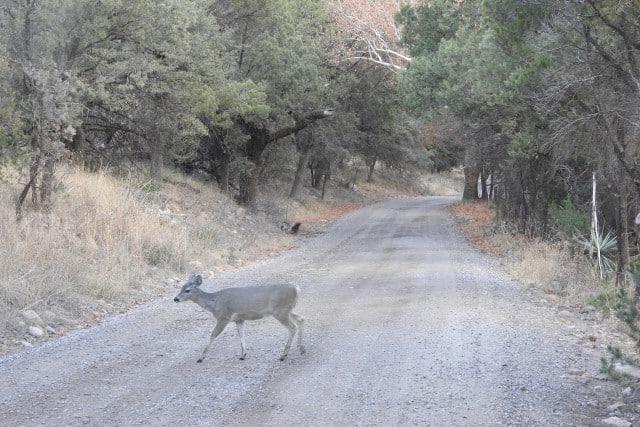
Let’s discover more about hunting this rare deer species.
Be Ready for Difficult Conditions
The high altitude conditions and heat of their preferred habitat is hard for humans to handle. That’s why hunting Coues deer is not an adventure for beginners.
Know the Hunting Season
Hunting laws, including rules about the hunting season, vary by region.
Once you’ve decided where you want to hunt coues deer, find out the laws and regulations in the area.
Get a Hunting License
In Arizona and New Mexico, bow hunting is only allowed with a license early in the season. Most coues deer hunting takes place on public lands, meaning that it’s accessible to anyone.
You can get a hunting license via lottery. Make sure to enter one of these lotteries if you want a chance at one of these licenses.
Use the Right Hunting Techniques
Coues deer are accustomed to fleeing fast predators like mountain lions. They’re faster than you probably think.
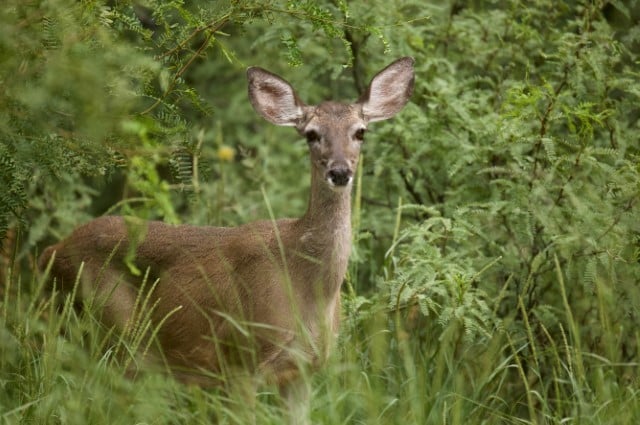
Their size is another challenge. You’ll need good optical equipment for hunting these deer.
Coues deer blend into their landscape very well. This makes them much harder to spot.
Understand the Behavior of this Species
Coues bucks tend to be solitary and territorial. They are less likely to be in herds than other species.
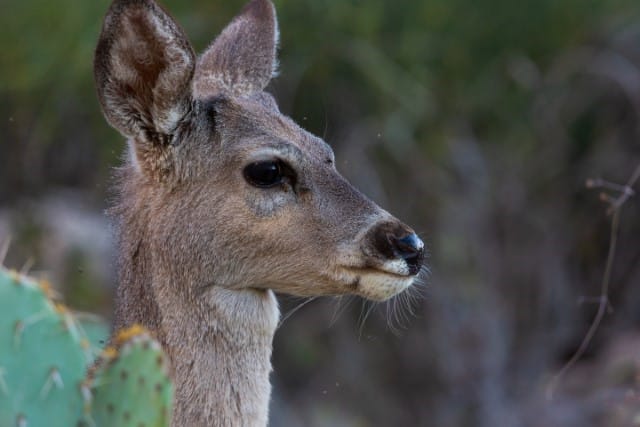
The “spot and stalk” technique is the normal way of hunting these deer. This means setting up a vantage point once the deer has been spotted.
Expect to wait a long time. Sometimes you might have to wait all day to hunt a good coues buck.
The advantage to hunting these deer is that they’re much smaller. They’re a lot easier to carry back home than a fully grown whitetail buck.
Coues Deer Venison
Coues meat is considered much milder than other types of venison. Because of this, you’ll probably need to add some extra spices and salt when cooking.
You can use just about any venison recipe for coues meat.
Final Thoughts
The Coues species is one of the most interesting whitetail subspecies. They’re only found in the southwestern United States and Mexico.
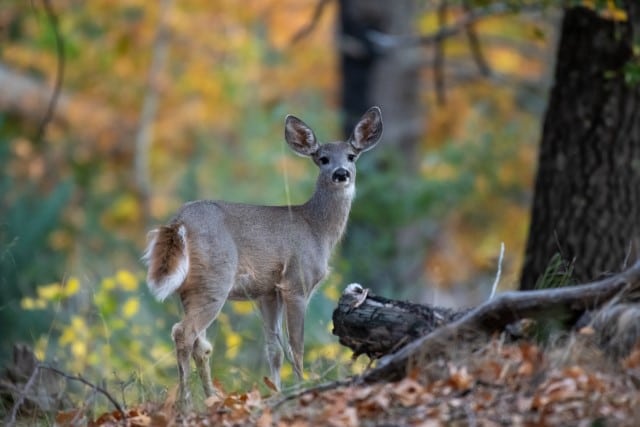
The main difference between the Coues and other whitetail sub-species is their size. Coues are usually half the size of whitetail.
They are most easily recognizable by their large ears that seem out of proportion with the rest of thier bodies.
Coues are hard to spot, live in harsh conditions, and are a challenge to hunt. It takes a dedicated hunter to score a coues buck.

